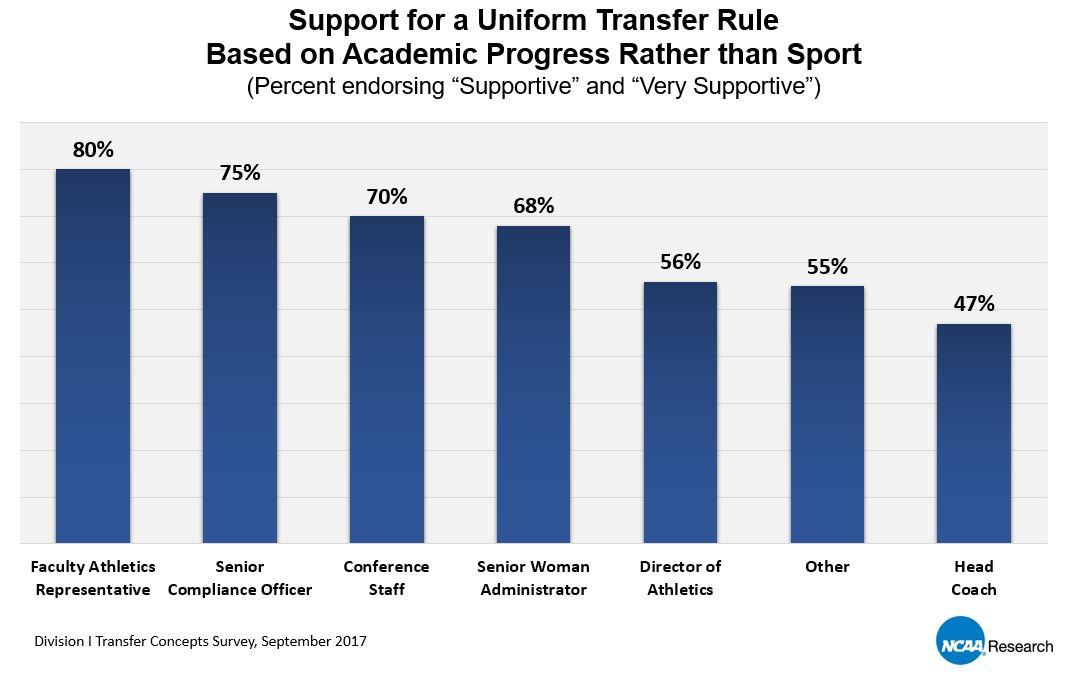Boston Vol
Well-Known Member
- Joined
- Dec 15, 2008
- Messages
- 15,522
- Likes
- 29,421
Their intentions are good, but hard to see how this doesn't hurt non-power 5 schools.
quote:
In a potentially paradigm-shifting proposal, the NCAA members may vote to allow all Division-I transfers to be eligible to play immediately. The only potential restrictions are that student-athletes would be asked to meet a minimum GPA, in order to transfer immediately, and that any additional transfer would require the student-athletes to sit out a full year. The proposal, which is being solicited among members for feedback, is gaining increased traction in recent weeks, a source confirms.
In April, a 19-person task force comprised of commissioners, athletic directors, coaches, and student-athletes initially assembled under the name of Division I Transfer Working Group. Their mission was to bring a fresh approach to the often publicly maligned transfer process. Although earlier groups had been formed in prior years under similar missions, the Transfer Working Group was given more data, while also tasked with the goal of trying to create uniformity within the transfer process.
By late June, the Transfer Working Group made progress on creating uniformity in transfer rules. They contemplated two polar-opposite options: the first was to require every student-athlete to sit out a year, while the second option was to enable every student-athlete to be immediately eligible upon transferring to a new school, as long as they achieved a minimum GPA designed to lead the student-athlete ultimately to graduate.
TWG Chairman Justin Sell, Athletic Director of South Dakota State, told NCAA Associate Director of Public and Media Relations Michelle Brutlag Hosick at the time, I am thrilled with the great progress made this week, and Im confident we can move forward with some initial concepts for consideration in this years legislative cycle. We are working toward academics-based, data-driven decisions that benefit student-athletes, teams and schools.
Within recent weeks, it has become more clear that the latter option of immediate eligibility for transfers who achieve a minimum GPA is the one gaining traction amongst members. The proposal must be completed by Nov. 1. The members of the Transfer Working Group will continue to seek feedback from fellow coaches, directors, commissioners and student-athletes in the days ahead, but it is becoming more likely that the proposal will be voted upon next April with the possibility of this going into effect as early as the 2018-19 calendar. The uniformity of applying the same rules across all sports would potentially streamline the transfer process.
Proponents of student-athletes being permitted to change schools as freely as coaches will undoubtedly laud this potential new development. The concern from some detractors may be the further encouragement of raiding smaller programs as well as the likelihood that the number of annual transfers will grow exponentially. The challenge of tracking potential tampering in pending transfers may also be a potential hazard of the new development.
quote:
In a potentially paradigm-shifting proposal, the NCAA members may vote to allow all Division-I transfers to be eligible to play immediately. The only potential restrictions are that student-athletes would be asked to meet a minimum GPA, in order to transfer immediately, and that any additional transfer would require the student-athletes to sit out a full year. The proposal, which is being solicited among members for feedback, is gaining increased traction in recent weeks, a source confirms.
In April, a 19-person task force comprised of commissioners, athletic directors, coaches, and student-athletes initially assembled under the name of Division I Transfer Working Group. Their mission was to bring a fresh approach to the often publicly maligned transfer process. Although earlier groups had been formed in prior years under similar missions, the Transfer Working Group was given more data, while also tasked with the goal of trying to create uniformity within the transfer process.
By late June, the Transfer Working Group made progress on creating uniformity in transfer rules. They contemplated two polar-opposite options: the first was to require every student-athlete to sit out a year, while the second option was to enable every student-athlete to be immediately eligible upon transferring to a new school, as long as they achieved a minimum GPA designed to lead the student-athlete ultimately to graduate.
TWG Chairman Justin Sell, Athletic Director of South Dakota State, told NCAA Associate Director of Public and Media Relations Michelle Brutlag Hosick at the time, I am thrilled with the great progress made this week, and Im confident we can move forward with some initial concepts for consideration in this years legislative cycle. We are working toward academics-based, data-driven decisions that benefit student-athletes, teams and schools.
Within recent weeks, it has become more clear that the latter option of immediate eligibility for transfers who achieve a minimum GPA is the one gaining traction amongst members. The proposal must be completed by Nov. 1. The members of the Transfer Working Group will continue to seek feedback from fellow coaches, directors, commissioners and student-athletes in the days ahead, but it is becoming more likely that the proposal will be voted upon next April with the possibility of this going into effect as early as the 2018-19 calendar. The uniformity of applying the same rules across all sports would potentially streamline the transfer process.
Proponents of student-athletes being permitted to change schools as freely as coaches will undoubtedly laud this potential new development. The concern from some detractors may be the further encouragement of raiding smaller programs as well as the likelihood that the number of annual transfers will grow exponentially. The challenge of tracking potential tampering in pending transfers may also be a potential hazard of the new development.



